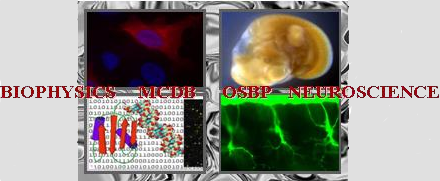Poster abstracts
Poster number 64 submitted by Balasubramani Hariharan
Polarity and Charge as determinants for translocase requirement for Membrane protein insertion.
Balasubramani Hariharan (Biophysics Graduate Program), Raunak Soman (OSBP)
Abstract:
Membrane protein biogenesis in bacteria is a well-studied but poorly understood area in the field of membrane proteins. It constitutes for one third of the cellular proteome. The two key components discovered so far in this cascade of events from protein translation to being inserted into the inner membrane are the Sec translocon complex (SecYEG) and Membrane protein insertase YidC. Both the proteins are universally conserved and translocate about 95% of the membrane proteins. YidC functions both independently and in concert with the Sec translocon.(1) The crystal structure revealed the presence of a hydrophilic groove open to both the cytoplasm and the lipid bilayer. Structure guided biochemical assays unveiled a mechanism for single transmembrane protein translocation which involves interaction of charged residue in residue in the hydrophilic groove of YidC.(2) The mechanism for larger substrates is not yet understood completely. We hypothesize that the polarity and charge of the periplasmic regions of membrane proteins determine the YidC and Sec translocase requirements for insertion. Here we have tested this polarity/charge hypothesis by showing that Major coat protein of bacteriophage M13 (Gene VIII) can become increasingly YidC/Sec dependent by making the periplasmic loop highly polar in the absence of charged residues. We also show that adding hydrophobic amino acids to highly polar loop can decrease the Sec-dependence of the otherwise strictly Sec-dependent substrates. Additionally we test whether the length of procoat loop and the positive charge are determinants for Sec dependence and find that as we increase the length of the loop it becomes more YidC/Sec independent. We picture the insertion of substrates as a phenomenon happening at the interface of both YidC and Sec translocon. These properties can be greatly utilized when designing the epitope for efficient Phage display that can be used as a therapeutic agent.(3) This study also throws light on the requirements of both the insertase to coexist in all walks of life.
Keywords: Membrane Protein Insertion, Phage display, Sec Translocon
